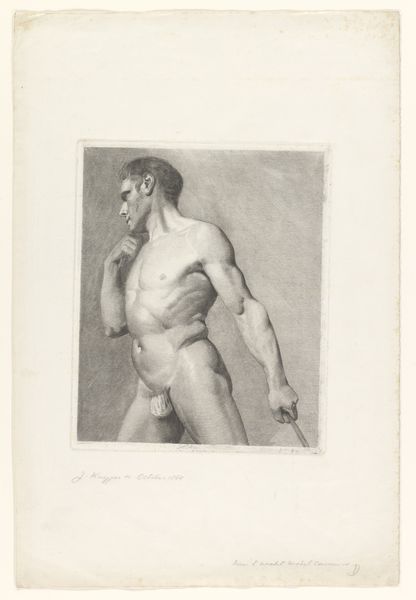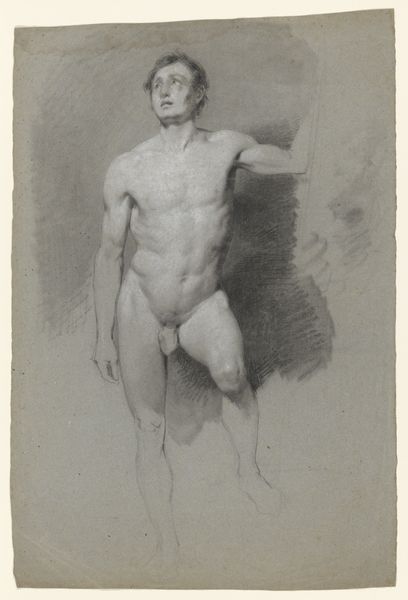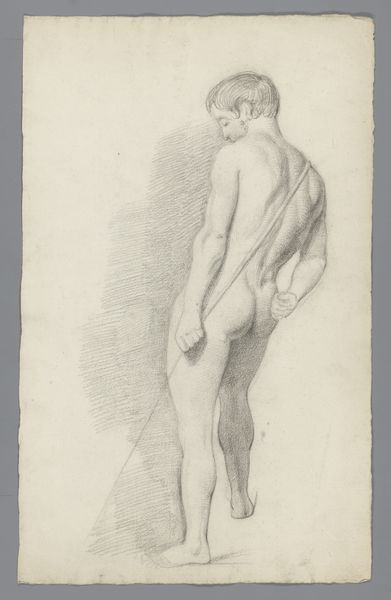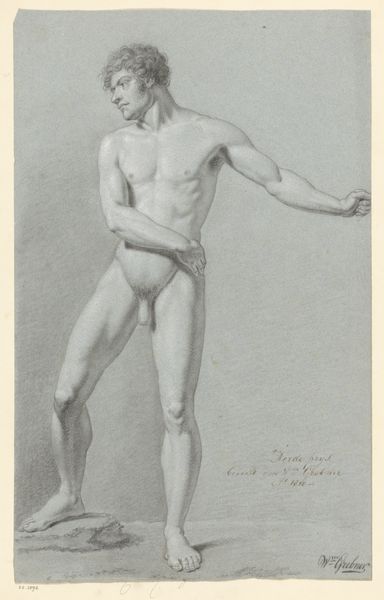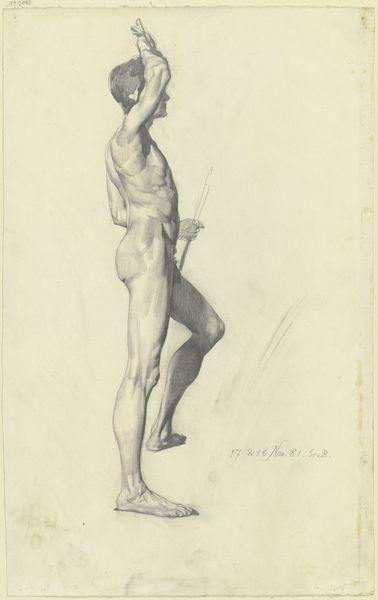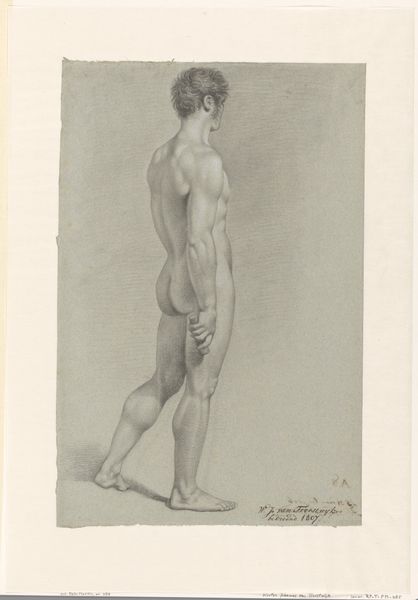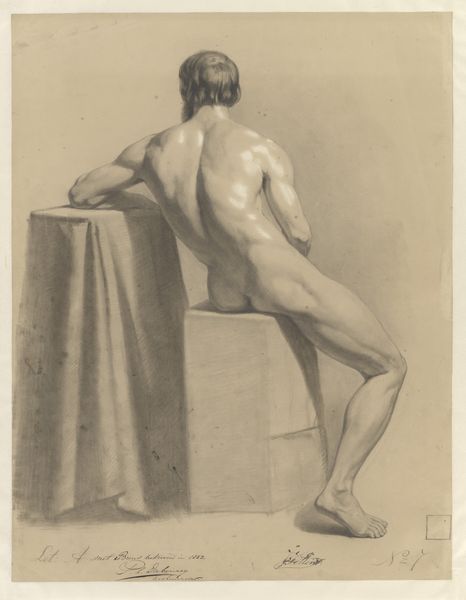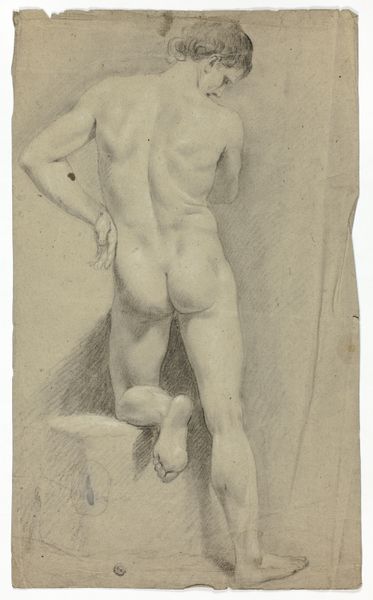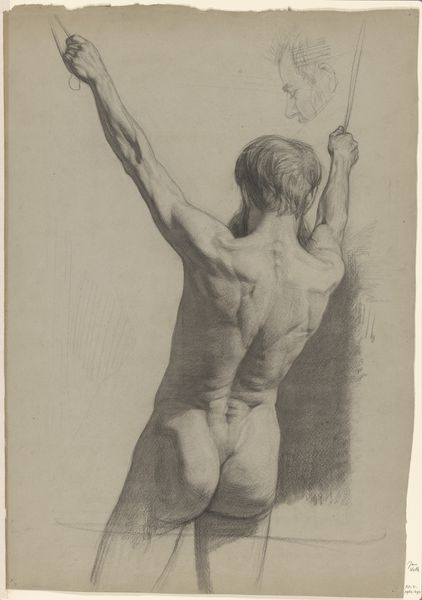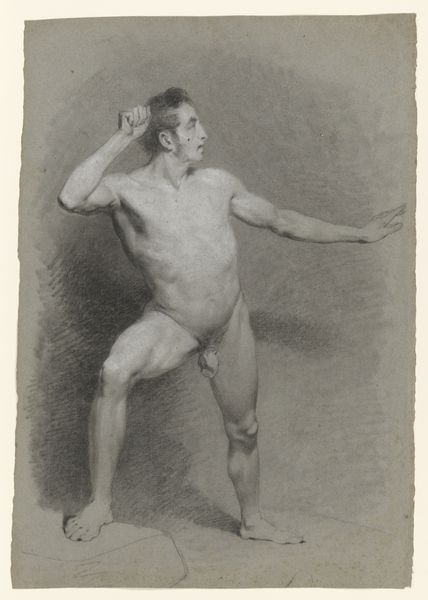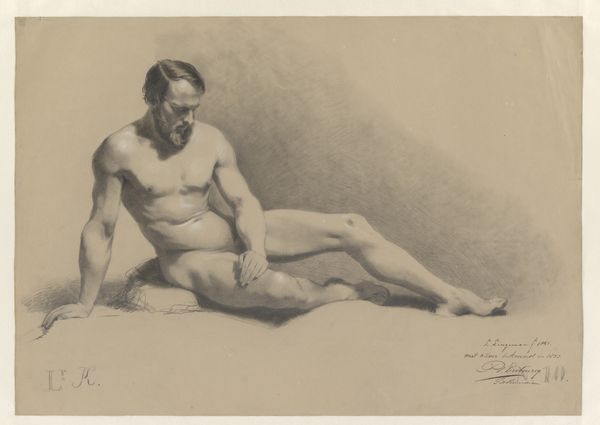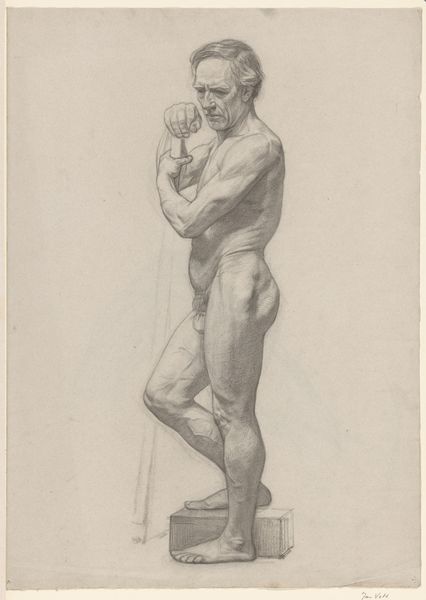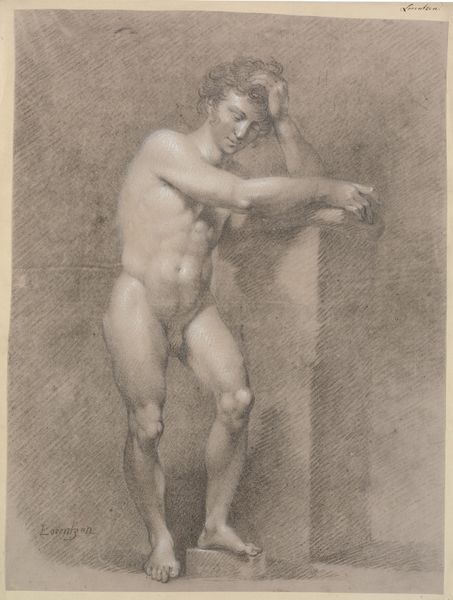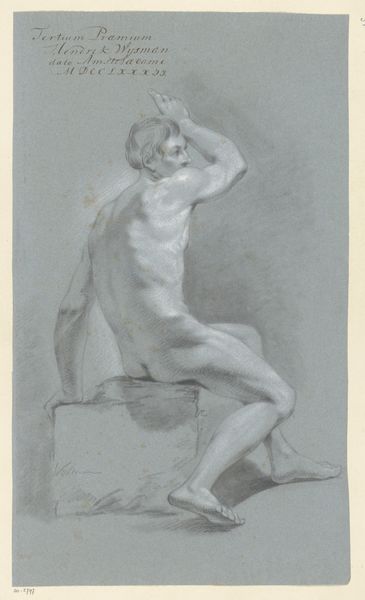
drawing, pencil, charcoal
#
portrait
#
drawing
#
charcoal drawing
#
pencil drawing
#
pencil
#
portrait drawing
#
charcoal
#
academic-art
#
nude
#
portrait art
#
realism
Dimensions: height 565 mm, width 365 mm
Copyright: Rijks Museum: Open Domain
A. Waterloo's 'Standing Male Nude, Front View' is a drawing rendered in an unknown time, though it exemplifies an era that equated the nude male form with heroism and the Western ideal. In the European art tradition, the male nude has often served as a canvas for projecting societal values, particularly around masculinity and power. The deliberate act of portraying a nude male—especially in a non-vulnerable pose—historically reinforced patriarchal ideals. We might consider how the male figure is actively positioned. His assertive stance and muscular build, accentuated by the artist's attention to anatomical detail, convey a sense of strength and control. This contrasts with the history of the female nude, which often carries connotations of passivity and objectification. Waterloo's depiction invites us to think critically about the power dynamics inherent in the act of representation and how those dynamics have shaped our understanding of gender and the human form.
Comments
No comments
Be the first to comment and join the conversation on the ultimate creative platform.
